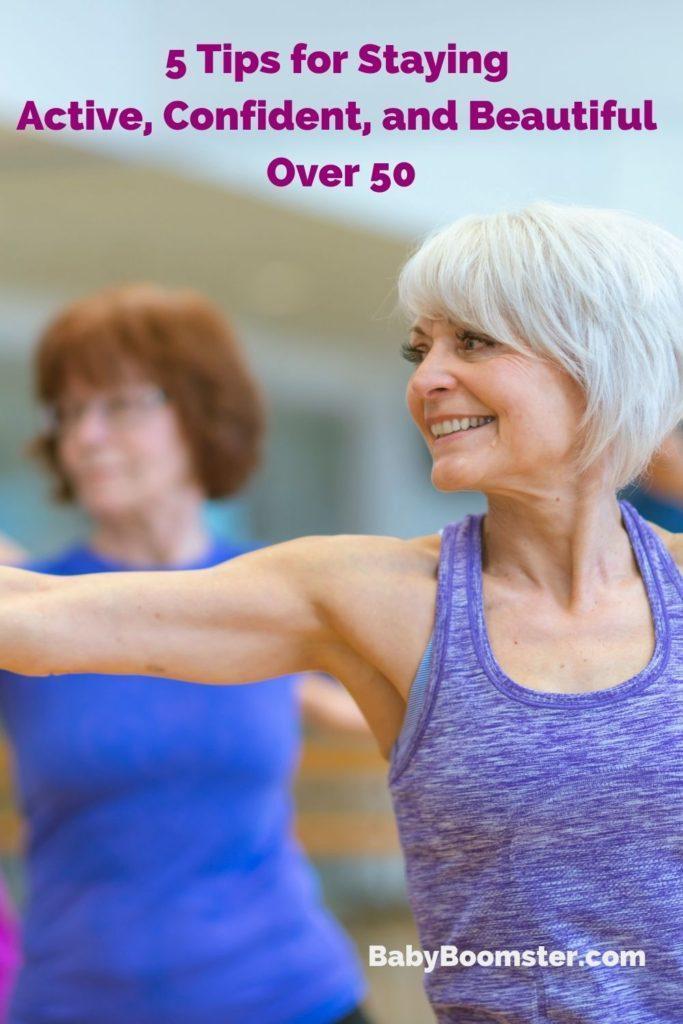Maintaining a workout routine when you are over 50 can help you improve your longevity and your health. Physical activity is also a mental health and confidence booster that keeps you in a good mood and happy about your appearance. Despite the many benefits of regular exercise, some middle-aged and older adults don’t have a fitness routine.
Staying idle is easy
Many aging adults succumb to their fear of injury, busy schedules, low motivation, or stress and end up leading a sedentary lifestyle which is unhealthy.
These 5 tips will help you develop a workout routine that is right for you.
1. Invest in Home Workout Equipment
The drive to the gym, no matter how short, can feel long when you’re not motivated to work out. When a gym membership doesn’t get you moving — or you’re avoiding it to stay away from crowds — investing in some home workout equipment (and dedicating a room to your workouts) can be well worth the cost. Your equipment doesn’t have to be expensive either. Buying simple products like resistance bands, a set of dumbbells, or yoga equipment can help you stay active without leaving your home.
If you want to make your workout more fun, you can add amenities to your home gym like a portable stereo system for music or a TV for entertainment.
Workouts at home don’t have to feel like exercising at the gym either. If you want to keep your routine interesting (and free), you can always consider dancing in your living room, going for a walk around your neighborhood, or swimming in your backyard pool.
2. Choose Exercises That Reduces Your Pain
For many middle-aged and older adults, chronic pain is a big deterrent to exercise. A regular fitness routine can help you alleviate your pains. For example, if you experience arthritis or joint pain caused by other conditions, exercises like the dumbbell farmer’s carry and weighted sled push can strengthen your joints through pain-free movements.
Workouts like high-intensity interval training (HIIT) and martial arts may require caution as you age, but highly targeted exercises can be excellent opportunities to boost your long-term health.
3. Focus on Form, Not Speed
The risk of injury can increase as you age. Fear of injury is completely valid. However, it shouldn’t deter you from being fit. You can safely get into shape no matter how old you are, as long as you warm up your muscles before exercising and prioritize proper form. Well-controlled movements help you work out the correct muscle groups (and avoid stressing the wrong ones).
While speedy lifts and intense cardio may seem like a norm in the fitness world, they can be hazardous. You can achieve your fitness goals faster by going slow. Make sure you fully understand what good form entails before you get started on a new workout, and only up the intensity once your starting point gets easy for you.
4. Work With a Trainer
Getting the motivation to work out can be tough when you’re going to the gym alone — especially if you’re not familiar with the gym environment. Professional fitness trainers can help. Whether you’re joining group classes or hiring a personal trainer, getting guidance in your fitness journey can be incredibly encouraging.
Personal trainers can also assist in increasing the safety of your workout routine by suggesting modifications for injuries or health concerns, or by crafting a fitness plan that targets your pains or weaknesses.
Don’t have time to meet with a professional? No problem. There are plenty of online exercise programs for people over 50 to keep you active, motivated, and confident about your health.
5. Listen to Your Body
Staying active doesn’t mean you have to work out hard every day. When your body is stressed, it will tell you. If you’re feeling tired or sore — especially if your normal workout routine suddenly feels harder to complete — you may simply need a rest day. Listening to your body can help you avoid injury and overexertion, so you can stay active instead of needing a month to recover from an exercise-induced health issue.
On the days you do work out, take a nap if you feel like it. It’s best to give yourself a post-exercise cool-down period — which can be as simple as a 10-minute walk — to allow for gradual recovery and let your heart rate steadily come down, sleeping after a workout can be healthy. Napping can help with muscle recovery, increase your mental alertness, and decrease your post-workout fatigue.
Stay Active No Matter Your Age
Staying active is the best way to be confident about your health and your appearance as a middle-aged or older adult. Implementing any of these five tips — whether you’re focusing on form or investing in professional training or a home gym — can be a big step forward in your fitness journey.




Leave a comment and tell us what you think